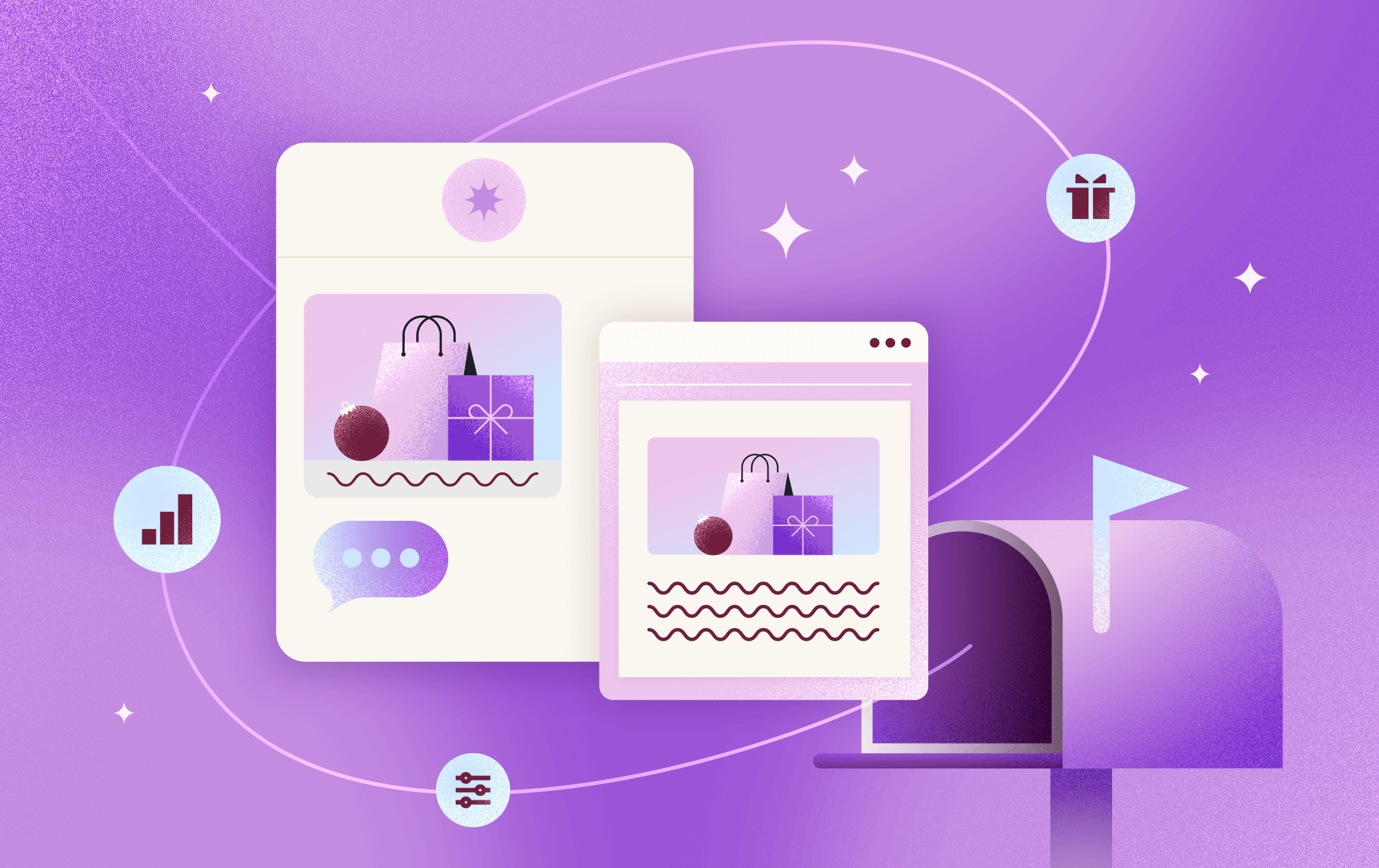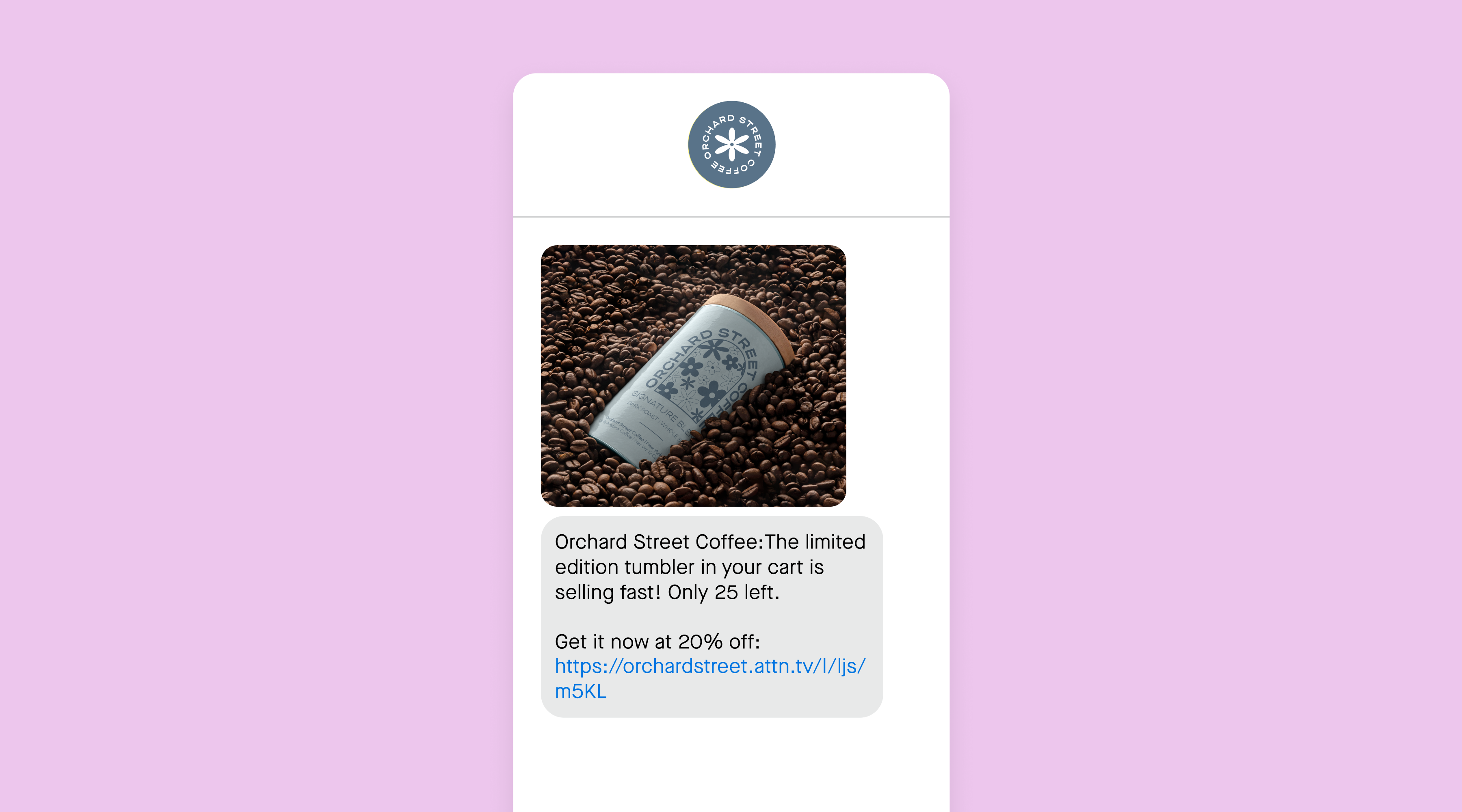
New releases
A smarter, simpler Attentive
Explore new features →
Explore new features →

This year’s BFCM feels especially high-pressure. Economic uncertainty has shoppers scrutinizing every dollar and marketers rethinking their strategies. Inbox competition is fiercer than ever. With 81% of consumers ignoring irrelevant messages, generic outreach won’t cut it.
That’s where personalized email and SMS become a major revenue lever. Not just basic tactics that give a 1% bump, but strategies that meaningfully increase customer engagement, conversions, and loyalty.
Movable Ink and Attentive have partnered to make strategic personalization possible at scale. Together, we help brands create experiences that feel timely, contextual, and tailored—helping you connect with customers during the busiest shopping season of the year.
We’ve put together four of the most impactful personalization tactics brands can use this BFCM to maximize revenue and build lasting customer relationships.
During BFCM, customers make decisions fast, so showing them relevant products can determine whether they buy or bounce.
Dynamic recommendations use real-time customer data—browsing behavior, purchase history, and preferences—to surface the exact products each shopper wants to see. This personalization cuts through the noise of generic product grids, reduces decision fatigue, and accelerates the path to purchase when every second counts.
Serve each customer the best products for them in your BFCM campaigns by prioritizing recent browsing and shopping behavior first, then turning to trending or bestselling items that match their category affinity or past purchases.
In these campaigns, you can use Movable Ink to layer in live pricing, product ratings, inventory levels, and social proof to drive action.
In addition to showing shoppers the items they left behind in abandonment journeys, add complementary products that complete the picture—helping a shopper visualize a full outfit or the accessories that make a product fully functional. When customers see how products work together, that can re-ignite their excitement while increasing order value.
To further boost abandonment journey performance, Movable Ink allows you to add real-time inventory status to urge shoppers to finish their purchases.
Follow up big-ticket purchases with accessories or add-ons that enhance the customer’s investment—suggesting items in post-purchase campaigns that complement what they just bought.
This approach helps customers maximize the value of their purchase, and they’re especially receptive to these recommendations when the excitement from the main purchase is still fresh.
Leverage geographic data to promote products and items that match the local climate and preferences. For example, surfacing rain boots for Seattle shoppers and western-style boots for those in El Paso, Texas.
As it gets closer to December holidays, use Movable Ink to dynamically add location-based shipping cutoff reminders to help customers get their orders on time.

Shoppers are motivated by discounts during BFCM, but they’re even more motivated by value. Using Movable Ink to weave real-time loyalty program data into your campaigns lets you create tailored offers and communicates what each shopper stands to gain by continuing to shop with your brand.
Imagine receiving a BFCM text that doesn’t just announce a 30% off sale, but also tells you:
These personalized, exclusive offers give shoppers a reason to buy with your brand instead of the dozens of others filling their inboxes.
By reminding customers of the rewards, points, and perks already waiting for them, brands can tap into sunk-cost psychology and strengthen loyalty during a season when shoppers are especially prone to switching.
Layering loyalty data into any message—from BFCM sale announcements to cart reminders—turns generic promotions into compelling, personalized nudges.

Not all shoppers are motivated by the same factors—so why treat them like they are? Leveraging both first-party behavioral data (like past purchases, browsing history, and cart activity) and zero-party data (preferences customers share directly, such as favorite categories or product types) is one of the highest-impact ways to boost BFCM revenue.
Segmentation doesn’t have to be complex. By combining these data types, marketers can create campaigns that feel individually crafted for each customer:
By activating key signals from first-party and zero-party data, brands can design campaigns that resonate with each shopper’s intent. For example:
When you combine behavioral insights with self-reported preferences, the result is twofold: customers feel understood and brands see higher conversions. You’re moving beyond one-size-fits-all messaging to align with purchase intent, so every BFCM message feels like it was created just for them.
Learn more about BFCM segmentation strategies.
Under the weight of endless browsing and comparison shopping, abandonment spikes during BFCM. Retargeting helps you reclaim lost revenue by reminding shoppers about what they showed interest in.
The brands that recover the most revenue go beyond basic “you left something behind” messages with strategic enhancements that turn abandoned sessions into completed purchases:
Movable Ink lets you pair abandoned products with real-time pricing and inventory status to encourage shoppers to complete their purchase. These dynamic details give shoppers a real reason to act now.
When someone views a product but doesn’t add it to their cart, remind them about what they were interested in while adding new context. For example, you can add dynamic information with Movable Ink, such as customer ratings, new promotions, or social proof, like “23 people bought this today”. These details address hesitations they might have had during their initial browse.
Send session abandonment flows to target visitors who leave the site without visiting a product page. Feature your current bestsellers or items based on their past purchase behavior or any zero-party data you’ve collected.
During BFCM, highlight doorbusters or limited-time offers to give them a reason to return and explore.

These personalization strategies rely on technology that can process customer data in real time and adapt messaging automatically.
That’s where solutions like Movable Ink and Attentive create a competitive advantage. Together, these platforms enable marketers to launch email and SMS campaigns that adjust automatically based on product and customer data.
The result: highly individualized campaigns that scale effortlessly.
BFCM is the biggest revenue opportunity of the year, but also the most competitive. While your promotional strategy may already be set, execution determines whether you stand out or get lost in the inbox. With Attentive and Movable Ink powering personalized, cross-channel experiences behind the scenes, you can deliver the relevance that maximizes conversions and drives meaningful revenue.